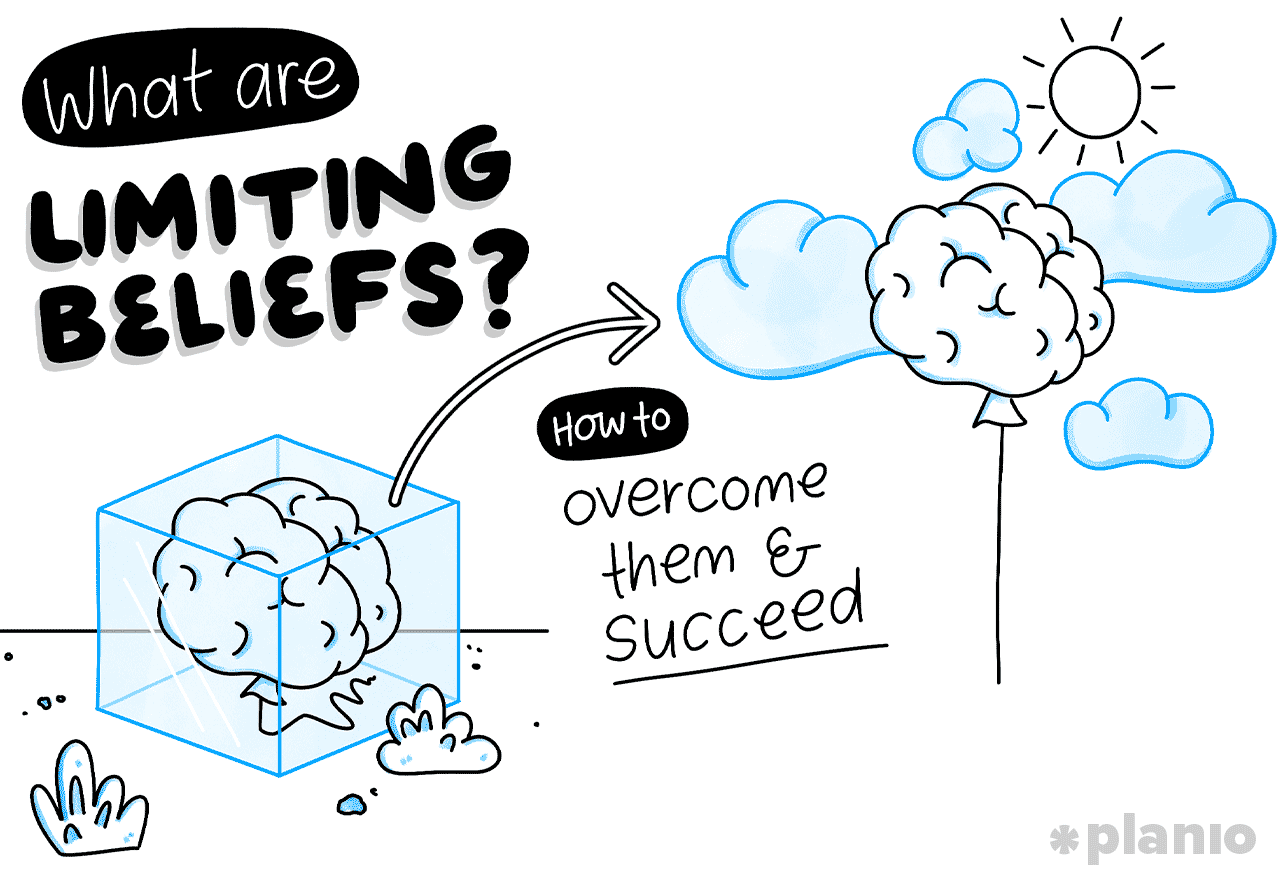Overcoming Limiting Beliefs: Unlocking Your Full Potential

Limiting beliefs are one of the most powerful forces that hold people back from achieving their full potential. These beliefs, often formed during childhood or through personal experiences, can shape how we see ourselves, others, and the world around us. Overcoming limiting beliefs is essential for personal growth, achieving success, and building a fulfilling life.
In this article, we will explore what limiting beliefs are, how they affect us, and practical strategies for overcoming them. Let’s dive in and learn how to break free from the mental barriers that may be holding you back.
What Are Limiting Beliefs?
Limiting beliefs are thoughts or convictions that restrict our ability to reach our goals or experience personal growth. These beliefs can be conscious or subconscious, and they often manifest as negative thoughts or self-doubt. Some common examples include:
– “I’m not good enough.”
– “I’ll never be successful.”
– “I don’t deserve happiness.”
– “I can’t change my circumstances.”
These beliefs often arise from past experiences, cultural conditioning, or societal pressures. They create a mental block that prevents us from stepping outside our comfort zones, trying new things, and striving for our true potential.
How Limiting Beliefs Affect Your Life
Limiting beliefs have a profound impact on various areas of life, including career advancement, personal relationships, and mental well-being. Here’s how these beliefs can affect you:
1. Career Stagnation
Limiting beliefs about your abilities can prevent you from pursuing career opportunities. Thoughts like “I’m not qualified” or “I’m not capable of handling a leadership role” may lead to missed promotions, job opportunities, or career advancements.
2. Low Self-Esteem
Believing that you’re not worthy of success or happiness can significantly impact your self-esteem. You may feel unworthy of compliments, accomplishments, or even basic self-care, which in turn can lead to depression and a negative self-image.
3. Fear of Change
Limiting beliefs often create a fear of change. You might feel trapped in a job or relationship, afraid that taking a risk or making a change will lead to failure or disappointment. This resistance to change can prevent personal growth.
4. Difficulty Achieving Goals
When you don’t believe in your ability to succeed, it becomes incredibly difficult to achieve your goals. Limiting beliefs can prevent you from setting ambitious goals, pursuing them with enthusiasm, or even taking the first step toward success.
Identifying Your Limiting Beliefs
The first step toward overcoming limiting beliefs is identifying them. Here are some common signs that you might be dealing with limiting beliefs:
1. Negative Self-Talk
If you frequently engage in self-talk that is negative, self-critical, or defeatist, you may have underlying limiting beliefs. Pay attention to your thoughts, especially when you’re facing challenges.
2. Fear of Failure or Success
Limiting beliefs often manifest as an irrational fear of either failure or success. This fear can stop you from taking action or achieving your full potential.
3. Avoidance of Opportunities
When you avoid new opportunities or challenges because you believe you’re not good enough, it’s a sign that you might be holding onto limiting beliefs. These beliefs create a fear of stepping outside your comfort zone.
Strategies for Overcoming Limiting Beliefs
Now that we understand what limiting beliefs are and how they affect us, let’s look at some practical strategies for overcoming them and unlocking your true potential.
1. Recognize and Challenge Your Beliefs
The first step in overcoming limiting beliefs is to recognize them. Take time to reflect on your thoughts, especially when you face obstacles or challenges. When you catch yourself thinking negatively, pause and ask yourself:
– Is this belief based on facts or assumptions?
– How has this belief affected my life in the past?
– Is there evidence to support or contradict this belief?
Challenging your limiting beliefs allows you to see them for what they truly are: thought patterns that do not define you.
2. Reframe Your Beliefs
Once you’ve identified your limiting beliefs, it’s time to reframe them. Reframing involves changing the way you think about a situation or belief. For example, if you believe “I’m not good enough,” try reframing it as, “I am constantly growing and improving.”
- Example: Instead of saying, “I can’t do this,” reframe it as “I haven’t learned how to do this yet, but I’m capable of learning.”
By reframing your beliefs, you start to see possibilities instead of limitations, creating a mindset that is more open to success and personal growth.
3. Affirmations and Visualization
Affirmations are positive statements that help counteract negative thoughts and beliefs. By repeating affirmations daily, you can reprogram your subconscious mind to believe in your potential.
- Examples of affirmations:
- “I am worthy of success and happiness.”
- “I have the ability to achieve my goals.”
- “I am capable of overcoming challenges.”
In addition to affirmations, visualization can be a powerful tool. Visualize yourself achieving your goals and living a life free from limiting beliefs. Imagine the feelings of success, confidence, and freedom you would experience.
4. Surround Yourself with Positive Influences
The people you surround yourself with have a significant impact on your beliefs and mindset. To overcome limiting beliefs, seek out individuals who are supportive, positive, and who believe in your potential. Mentorship can be especially helpful in this regard, as it provides both guidance and encouragement from someone who has experienced success.
Overcoming Limiting Beliefs in Your Career

In your professional life, limiting beliefs can prevent you from taking risks, stepping into leadership roles, or seeking new opportunities. Here’s how to overcome them:
1. Set Clear, Achievable Goals
One way to overcome limiting beliefs in your career is to set clear, actionable goals. Break larger goals down into smaller, manageable tasks. Each time you achieve a task, it will build your confidence and reinforce the belief that you are capable.
2. Embrace Failure as Learning
Instead of seeing failure as a confirmation of your limiting beliefs, view it as a learning experience. Every failure is an opportunity to grow and improve. By reframing failure, you reduce its power over your decisions and actions.
FAQs on Overcoming Limiting Beliefs
What are some examples of limiting beliefs?
Common limiting beliefs include:
– “I’m not smart enough to succeed.”
– “I don’t deserve wealth or success.”
– “I’m too old to start something new.”
– “I’m just not lucky.”
How do I know if I have limiting beliefs?
Limiting beliefs often manifest as self-doubt, fear of failure, or resistance to change. If you find yourself avoiding new opportunities or feeling stuck in your personal or professional life, it’s a sign that you may have limiting beliefs.
How long does it take to overcome limiting beliefs?
Overcoming limiting beliefs is a process that takes time and effort. It’s important to be patient and consistent with your efforts. With practice, you’ll begin to see significant changes in your mindset and your ability to achieve your goals.
Conclusion
Overcoming limiting beliefs is essential for unlocking your full potential and living a life of success, fulfillment, and happiness. By identifying your beliefs, challenging them, and implementing strategies such as reframing, affirmations, and visualization, you can transform your mindset and embrace a world of possibilities.
Remember, your beliefs don’t define you—your actions and mindset do. Start today, and take control of your future. You are capable of far more than you think.
For more insights on overcoming limiting beliefs, check out Terri Kozlowski’s Comprehensive Guide and Plan.io’s Tips on Limiting Beliefs.

